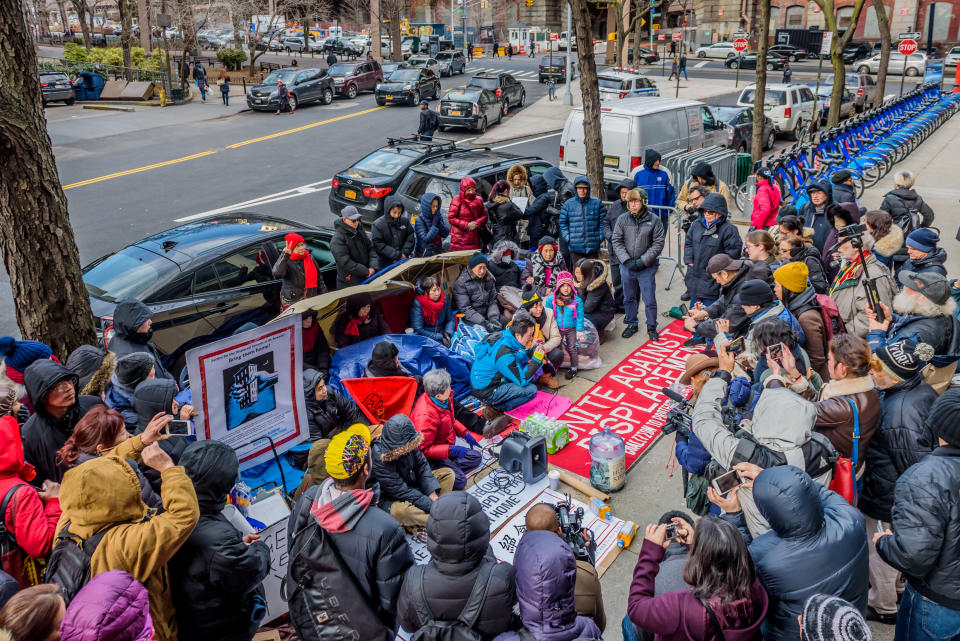There's a gap between jobs and job-seekers, and a housing crisis is making it worse
Recent evidence suggests there’s a widening gap between where hourly jobs are and where hourly job-seekers live — and the affordable housing crisis raging across major U.S. cities is contributing to the problem.
In a study published earlier this year by Urban Institute, this “spatial mismatch” has affected low and middle-income residents seeking hourly employment — but can’t find affordable housing where jobs are available. The problem is also intensifying in rapidly gentrifying cities like San Francisco, New York and Boston, where available jobs far outnumber jobs seekers.
In both the Bay Area and the Big Apple, frothy housing prices have propped up the average rent well above $3000. And all three cities are likely having difficulty filling open positions due to a skyrocketing cost of living, which stands at 80 percent more than the national average in San Francisco.
“The underlying problem is that we are not building enough housing, especially affordable housing,” said Lawrence Yun, chief economist for the National Association of Realtors (NAR), the largest trade association in the United States.
NIMBYs vs YIMBYs

American is in the midst of a deepening housing crisis, as more Americans move to cities every year, and low-cost rental housing becomes more difficult to find.
However, sharp debates persist over how to solve the problem. For example, New York City’s controversial rent control policies have largely failed to curb skyrocketing rental prices or alleviate a housing crunch, despite decades of implementation.
The city’s redoubled efforts to carve out affordable units in newer buildings hasn’t helped much, either.
“Sometimes, trying to build affordable housing, the developer [is] indicating that the profit margins are very thin— or [nonexistent] after paying for land, zoning, construction workers, materials, and a host of costs,” Yun said.
“So, ways to induce developers could be tax credits, providing more relaxation in some zoning code or allowing more high rise buildings rather than trying to restrict the density of housing,” he added.
In each market, efforts to address the problem have been either stonewalled, or met with stiff political resistance. Last year in California, a state where the crisis is most acute, a bill that aimed to build more dense housing was shelved in the Assembly appropriations hearings.
And in New York, significant opposition exists to state-wide action, as activists dubbed “NIMBYs” (Not In My Backyard) have argued that only local elected officials should be making judgements about the type and placement of housing in their communities.
Simultaneously, a separate lobby of “YIMBYs” (Yes In My Backyard) argue that the only solution to the housing crisis is to clear a legislative path towards building more dense housing in city centers.
“Housing should be regional and not local, and the reason why is something that happens in my neighborhood impacts surrounding neighborhoods,” said Lauren Thomas, Chair of Open New York, a YIMBY advocacy organization.
“I think if New Yorkers want an equitable city, ultimately they need to focus on making sure people have a place to live… The only way to get affordable housing is to have more housing.”
However, the problem is expected to continue, as long as housing prices in these torrid markets continue to rise while real wages stagnate. The housing market has cooled off slightly in 2019 thus far, but shortages continue to exist.
“We have a severe housing shortage,” said NAR’s Yin. “And this could be a major public policy issue unless we begin to address that,” he said.
Calder McHugh is an Associate Editor at Yahoo Finance. Follow him on Twitter:@Calder_McHugh.
The jobs report is even worse than it looks in these six sectors
These US industries could take the heaviest hit from new tariffs
Billed as a health product, CBD faces stiff test from skeptical regulators
US recovery closes in on 10 year milestone as fears abound that the party is ending
Follow Yahoo Finance on Twitter, Facebook, Instagram, Flipboard, SmartNews, LinkedIn, YouTube, and reddit.
